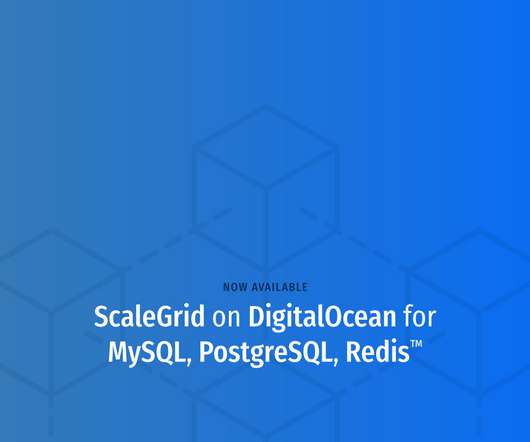ScaleGrid DigitalOcean Support for MySQL, PostgreSQL and Redis™ Now Available
Scalegrid
JUNE 9, 2020
The open source model is not only popular with the developer market, but also enterprise companies looking to modernize their infrastructure and reduce spend. You can see a detailed breakdown of this performance benchmark in their Comparing PostgreSQL DigitalOcean Performance & Pricing: ScaleGrid vs. DigitalOcean Managed Databases post.













Let's personalize your content